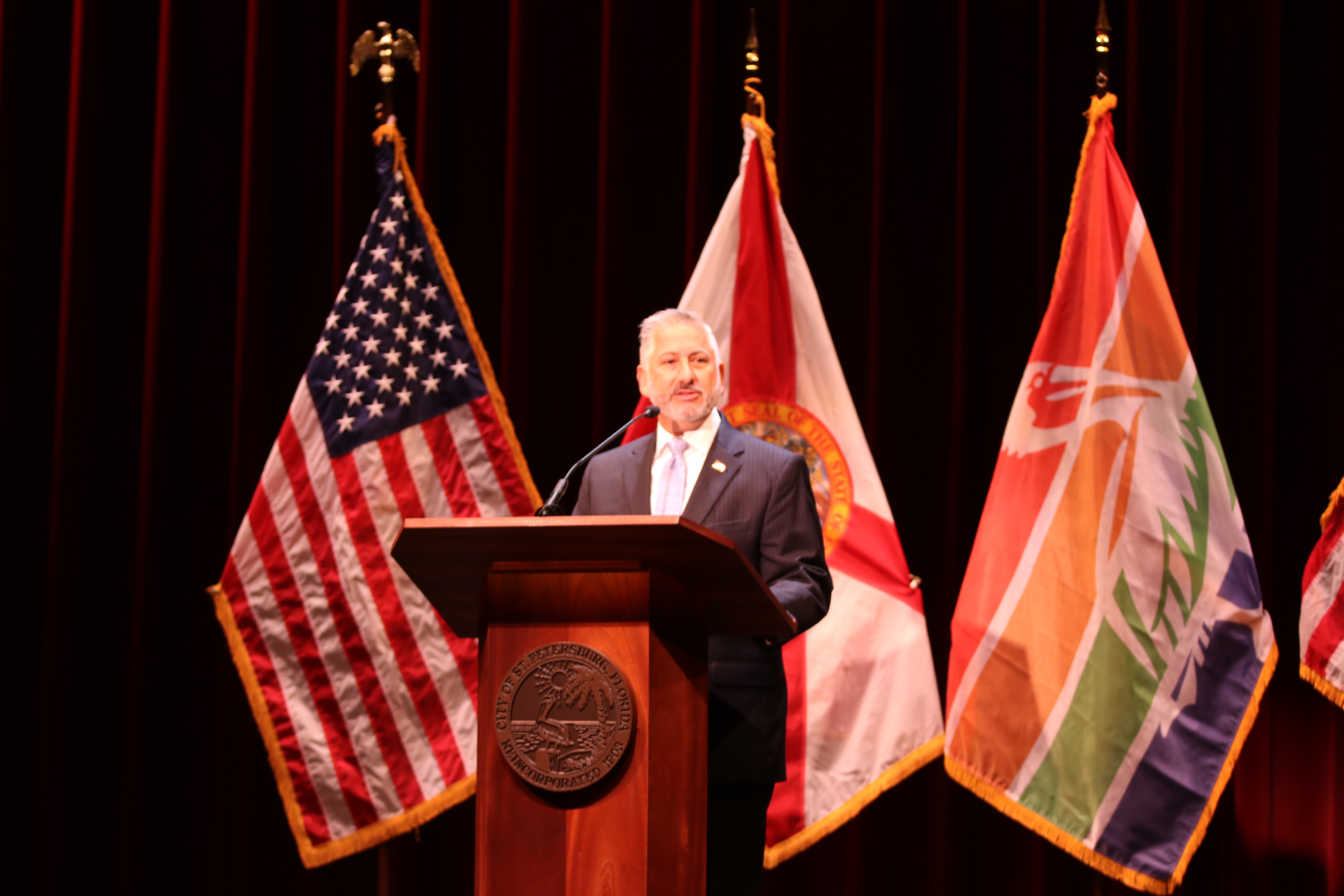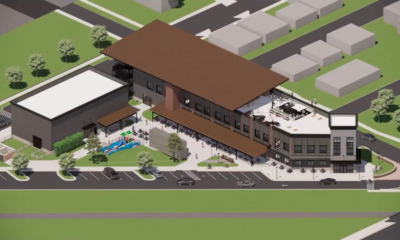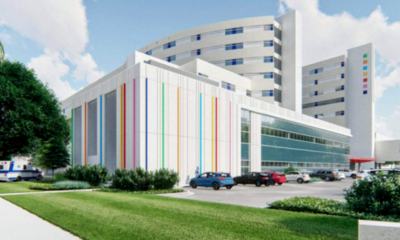Thrive
Kriseman talks business at State of the City

Mayor Rick Kriseman talked about several familiar economic themes at his State of the City address Saturday, including small business, big business, jobs and property values.
But there was one big issue he didn’t mention. There were no comments about the Tampa Bay Rays or the 85-acre Tropicana Field site, which Kriseman and other officials previously have described as a place for transformational change downtown.
“We’ve been talking so much about the Trop and really didn’t have anything new that would have been groundbreaking at this point in time. We’re continuing to talk to the Rays and see where we go,” Kriseman told the St. Pete Catalyst just before taking the stage at the Palladium. “If the team is ready to work on putting something together, we’re ready.”
Kriseman did not shy away from other business issues, including the Grow Smarter economic development strategy, to add jobs in marine and life sciences, specialized manufacturing, financial services, creative arts and design, and data analytics.
“We’ve learned these are the most sustainable and rewarding jobs for the residents of our city,” he said.
Last year alone, the city development administration helped secure nearly 2,000 jobs, most of them in the Grow Smarter sector.
“We are diversifying our economy with more livable wages, good benefits and more consumer spending power,” Kriseman said. “We have also been focused on retaining and growing anchors in these industries like Jabil, Raymond James, Power Design, L3 and UPC. These important anchors secure a cluster of workforce talent that other companies want to be around.”
He didn’t include the city’s latest economic development win, Dynasty Financial Partners, a financial services firm that’s moving its headquarters from Manhattan to downtown St. Petersburg, with 35 to 40 jobs here by year’s end and average annual compensation of at least $200,000.
Vacancy rates in downtown office towers are near an all-time low, limiting the number of advanced economy companies that might relocate here or expand here. As rents rise, it becomes more financially feasible for developers to build new office towers, that could draw more businesses and jobs. Critics have said high-rise towers threaten the qualities that have made St. Petersburg special.
While acknowledging concerns about growth in his remarks Saturday, Kriseman repeated sentiments he’s been expressing for the past few months.
“In a built-out city like St. Pete, height and density are the only options on the table when it comes to growth,” Kriseman said. “Growth is good. It’s especially good when you balance it with quality of life initiatives.”
He called recruiting, securing and growing anchor corporations “a priority,” but also said he supported small business owners and entrepreneurs. He highlighted a proposed ordinance, the Storefront Conservation Corridor plan, that sets standards for storefront sizes and includes financial and other incentives to retain independent businesses.
“This unique overlay is the result of a nearly two-year community conversation and aims to promote independently-owned businesses, maintain a pedestrian-friendly streetscape and promote the conservation of historic assets along Beach Drive and Central Avenue, from the waterfront to 31st Street,” Kriseman said. “This isn’t the answer to our growing pains downtown, but it is an answer. It’s another tool in our tool kit to help keep St. Pete local, to help us keep the vibe alive.”
During his five years in office, Kriseman has focused a lot of attention on the Midtown and south St. Petersburg areas. When he took office in 2014, he said one of every five residents in those areas was unemployed, 25 percent of the residents lived at or below poverty. Property values had dropped 42 percent in those areas in the six years since the recession.
On Saturday, he said St. Petersburg is outperforming the United States and many peer cities, but he didn’t specifically breakout the Midtown area.
“In the last three years, our median income increased by 20 percent, compared to 12.5 percent for the United States as a whole. Among Florida’s five biggest cities, the most recent data shows that our poverty rate is now the lowest,” Kriseman said. “Unemployment is also in decline, outpacing the Tampa Bay region, the State of Florida, and the United States. And it’s declined every year since 2015. Property values in our south St. Pete Community Redevelopment Area are up nearly $260 million dollars in the past four years. “
Kriseman highlighted St. Pete Works, a collaboration with community organizations to increase employment in the CRA. Since it was rolled out in the fall, it’s led to more than 100 jobs, he said.
Here are some more economic highlights from Kriseman’s address and the city’s 2018 Impact Report.
Jobs
45 jobs created from business expansions
150 jobs created from city-led initiatives
2,000 jobs created from business expansions
Cultural affairs
11 museums
$76.7 million direct economic impact
2,000 full time employees
Infrastructure
$24.3 million invested in capacity expansion at city plants
75 lane miles of city’s 2,130 lane miles resurfaced
$186 million invested toward reduction in stormwater and wastewater inflow and infiltration








Lillian Tergesen
March 6, 2019at6:10 am
How about more senior low cost buildings! All I see is high rises seniors can’t afford! What about the seniors? What about our homeless?
Rose Smith-Hayes
February 26, 2019at2:21 pm
This is not New York and it never will be. Keep the ‘Small Town’ flavor, that is why tourism is so great.
No comments about Affordable Housing, nothing for ‘regular people. Forcing out ‘Mom and Pop’ businesses.